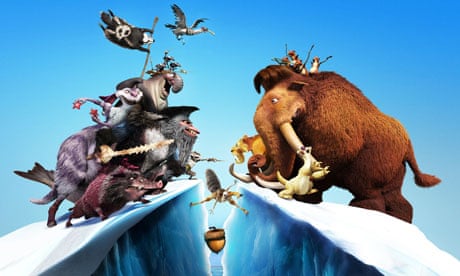When the first Ice Age film came out, I got quite excited. As a palaeontologist with a particular interest in mammal fossils, it was great to see how all those creatures were reconstructed. Although I did enjoy it, things got a bit ridiculous when they started talking about dinosaurs – which, of course, weren't around in the ice age at all.
The fourth film is great fun, but similarly ridiculous. A sabre-toothed squirrel called Scrat causes a huge shift in the Earth's tectonic plates when he bangs an acorn into the ice sheet and causes it to crack. That made me giggle, but the pace of the plate-shifting is utterly improbable. Then, as today, plates moved 1-15cm a year; in the film, entire continents form in seconds. Also, by the ice age, Earth's original land mass had already been pretty much broken up into the continents we have now.
That said, the film-makers have made some effort to get their facts right. Most of the mammals featured – the smilodon, for instance – were around in the most recent ice age, and they look pretty much as we'd expect them to. Because their remains have been found frozen, we know exactly what woolly mammoths would have looked like, even down to hair colour. I couldn't help trying to date the animals – and some definitely weren't around at the same time. The ice age took place between 100,000 and 10,000 years ago, but we see a massive whale that I'm sure dates from 12m years ago. I also doubt all these different species would have lived together in a herd – although remains of sloths, smilodons and mammoths have been found together in the La Brea tar pits near Los Angeles.
The best thing about the film, and the series, is that it's a great introduction to fossil study: it might not be entirely accurate, but it does give you a sense of what it was like when these mammals walked the Earth. I hope kids who see it will go on to discover the joys of palaeontology.
Sarah Joomun works at the Oxford University Museum of Natural History.

